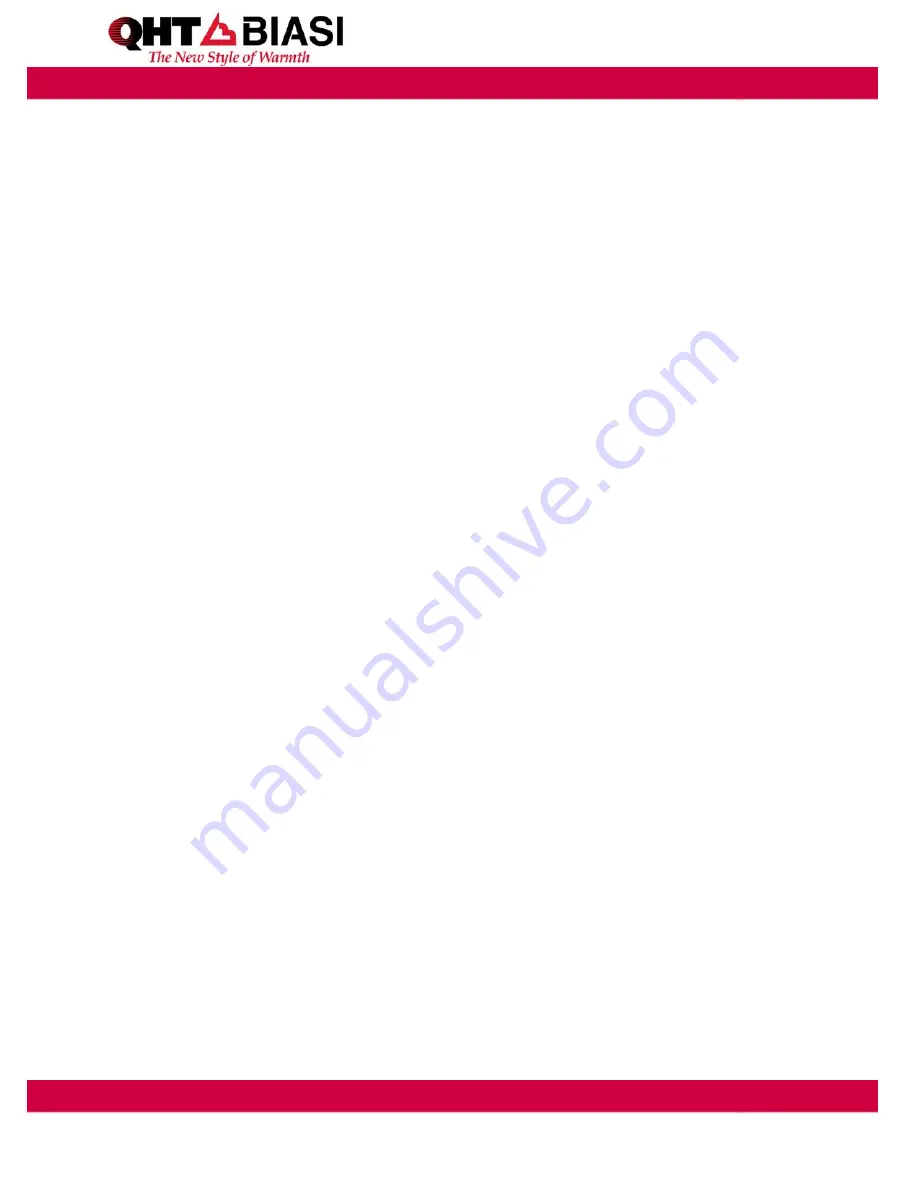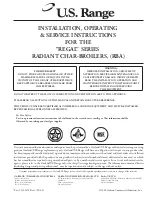
26
B. 4-WAY MIXING VALVE Installed with 3WOOD Boiler in Combination with Oil/Gas Boiler
1. A mixing valve arrangement is a method of controlling house temperature that is different than traditional American
systems. In the average hydronic system, circulating or not circulating water of a fairly high and relatively constant
temperature to radiation controls temperature in the house or zone. The thermostat used in such a system is a simple
switch to a relay, which turns the circulator on and off. In a mixing valve controlled system, the circulator runs
continuously, and the temperature of the water flowing to the house is varied by the mixing valve, which adds more or
less cooler return water to the boiler-heated, water being pumped to the radiation. The valve is controlled manually by
the homeowner (a very common system in Europe), or is controlled automatically by an outdoor reset control.
A system controlled by a mixing valve has several advantages over a conventional off/on system.
•
Fuel savings of 20%
•
Longer boiler life due to elimination of thermal shock to the boiler caused by surges of cold return water at
circulator start-up
•
A quieter and more comfortable house, because heat is more even. Rather than having the heat turn
completely on and completely off in response to heating demands, causing fluctuation in the house
temperature, the heat is always “on” with the temperature of the radiation adjusting gradually to respond to
the house’s needs.
In addition, a mixing valve arrangement has very important advantages for solid fuel burning hot water systems.
Because there is constant circulation, there is always some heat being drawn from the boiler. Since a solid fuel is
always generating a certain amount of heat, such a system will dispose of this heat efficiently. In conventional
system, there is a grater possibility of the boiler overheating (when there is no circulation) and creosote formation
(caused by the fire burning too slowly). A mixing valve system minimizes the possibility of either of those
problems occurring, thus increasing both the safety and efficiency of the solid fuel system.
Mixing valve arrangements can be added to any of the systems described in this section or, in fact, to any
conventional heating system as well. We recommend the 4-way mixing valve to control the temperature of the
heating radiation. To mix wood heated boiler water with the return water from the distribution system, the boiler
supply pipe must enter the mixing valve opposite the heating return pipe.
The following outlines a typical installation of a mixing valve controlled distribution system with a 3WOOD
boiler in a system
planned for solid fuel firing with back-up from a oil or gas-fired boiler.
1. The line from the
3WOOD
boiler supply tapping goes to the oil/gas boiler return tapping. Install a “tee” with a 1” branch in
the line as close to the
3WOOD
boiler as possible. This branch tee should point up and will route the piping to the “dump
zone”. There must not be a valve or any potential restriction between the boiler and this tee.
2. Immediately after the “dump-zone” tee, install another tee with a ½ inch branch to install the L4006B aquastat to operate the
3WOOD
circulator
3. In the boiler supply piping install an air purger and expansion tank sized to handle the water in the distribution system as well
as the
3WOOD
boiler.
4. Pipe the make-up water into the
3WOOD
boiler and the oil/gas boiler through a Watts 1156F fill valve (pressure reducing
valve) into the lower rear ½” tapping at the bottom of the
3WOOD
boiler and also into the oil/gas boiler.
5. Install a tee with a 1” branch for the dump zone in the return tapping as close to the
3WOOD
boiler as possible. Point the
branch of the tee up.
6. The
3WOOD
boiler circulator should be installed from the other pipe-leg of the tee to the supply tapping of the mixing valve
from the supply tapping of the gas/oil boiler. This circulator line is piped into the
3WOOD
boiler from the circulator through a
flow check, then running end of the “dump-zone tee and finally into the return tapping of the
3WOOD
boiler.
7. The
3WOOD
boiler circulator may be controlled by an outdoor reset controller operating the mixing valve, the oil/gas boiler or
circulator relay or a Honeywell R89 or R845 or equivalent if the mixing valve is manually operated. This relay is controlled by
both the
3WOOD
boiler Aquastat and the Overheat Aquastat installed in the
3WOOD
boiler.















































